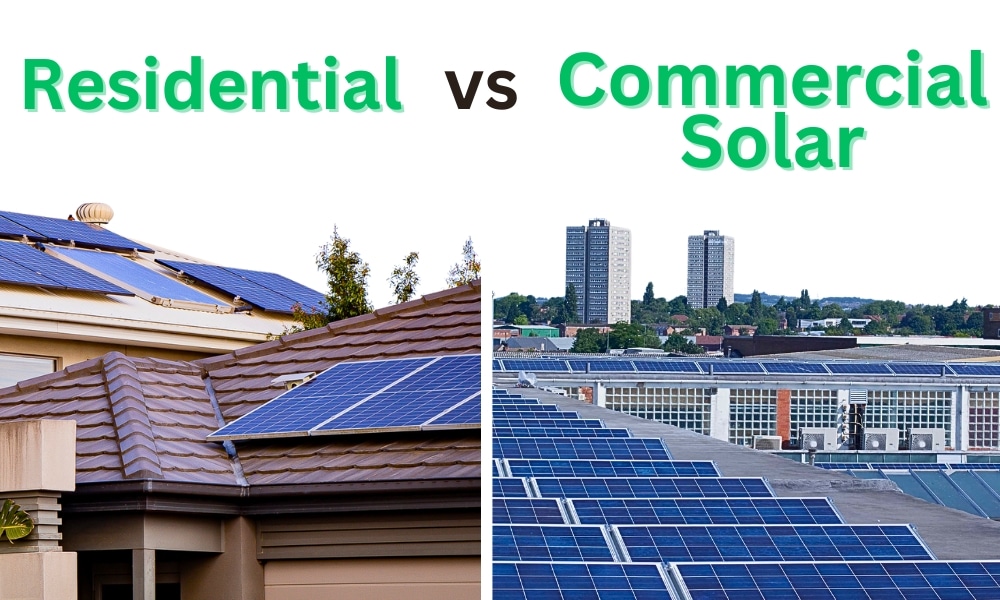
Introduction
Solar panel installation in Pakistan is no longer a luxury—it’s a necessity for both homeowners and businesses looking to cut electricity costs and gain energy independence. As solar energy adoption grows across the country, understanding the differences between residential and commercial solar panel installation becomes essential. This guide will walk you through the technical variations, cost breakdowns, and performance differences, helping you choose the best solution tailored to your energy demands. companies in Islamabad with confidence.
Residential vs. Commercial Solar Panel Installation: Design, Scale & Strategy
When planning a solar panel installation, it’s important to assess the differences in design, installation techniques, and output expectations between residential and commercial setups. While both aim to harness clean energy, the engineering and regulatory requirements vary significantly.
1. Residential vs. Commercial Solar Panel Installation: Scale & Design
Residential Projects
-
System size: Typically 3–10 kW, designed for household use.
-
Roof integration: Mounted on pitched or flat residential roofs; weight limits and solar array uniformity matter.
-
Panel types: Mid-range Tier‑1 monocrystalline panels (~300–400 W) balance performance and cost.
Commercial Projects
-
System size: Ranges from 50 kW to several megawatts (e.g., large warehouses, factories).
-
Ground or rooftop: Needs structural analysis for value, may include trackers for sun-following.
-
Panel types: Higher efficiency panels (400 W+), bifacial modules, higher voltage strings to reduce BoS costs.
2. Solar Panel Installation Setup: Electrical Configuration & Inverter Options
Residential
-
Inverter types: Usually single or three-phase string inverters (3–10 kW); microinverters used when shading is present.
-
Protection & wiring: Standard consumer mains protection; use MC4 connectors, 6–10 mm² cables.
Commercial
-
Inverter setup: Central inverters (100 kW+) or multiple string inverters, often paired with power optimizers.
-
Electrical challenges: Custom switchgear, high-capacity grid interconnection, reactive power control, SCADA integration for performance tracking.
3. Solar System Installation Permits, Net-Metering & Grid Connection in Pakistan
Residential
-
Net-metering: Systems ≤1.5× sanctioned load; approvals via AEDB and DISCOs.
-
Simplified grid connection: Often standard residential metering equipment; conventional approvals.
Commercial
-
Heightened scrutiny: Larger capacity triggers load-shedding analysis, grid impact studies, and higher interconnection standards.
-
Advanced metering: Bi-directional energy meters, billing agreements, and possible wheeling contracts.
4. Structure & Mounting: Best Practices in Solar Panel Installation
Residential
-
Roof mounts: Use lightweight aluminum rails; penetration minimized to prevent leaks.
-
Tilt optimization: Fixed tilt matching tilt of roof, occasionally seasonal tilt adjusters.
Commercial
-
Roof infrastructure: Requires rooftop structural analysis and potential reinforcements.
-
Ground-mounted solutions: Pile foundations or concrete blocks; tracking systems possible for higher yield.
5. Monitoring Solar System Installation: Tools & Maintenance for Long-Term Efficiency
Residential
-
Monitoring tools: Mobile/web app energy dashboards with individual inverter or string-level monitoring.
-
Maintenance: Semi-annual inspections and biannual cleaning suffice in lower dust zones.
Commercial
-
Advanced SCADA/EMS: Vital for multi-level system control, fault detection, and performance optimization.
-
Frequent maintenance: Quarterly inspections, quick-response O&M teams, lidar-based soiling analysis in dusty zones.
6. Comparing ROI of Residential vs. Commercial Solar Panel Installation
Residential
-
ROI horizon: 2–4 years payback, depending on electricity tariffs, net-metering, and system size.
-
Component warranties: Panels typically 25 years; inverters 10–15; residential batteries ~5–10 years.
Commercial
-
Economies of scale: Cost-per-kW often 15–30% lower than residential projects.
-
ROI factors: Higher initial cost offset by production scale, tax breaks, and offsetting large electricity draws.
-
Commercial-grade warranties: Tier‑1 panels 25+ years, inverters 15+; O&M contracts with SLA and performance guarantees.
7. Choosing a Trusted Solar Panel Installation Company in Islamabad
Sunsync Green provides :
-
Detailed system engineering: Load flow, structural analysis, electrical balancing, and high-efficiency BoS optimization.
-
Custom ROI & production simulations: Region-specific yield modeling, tariff escalations, and tax forecasting.
-
Robust O&M plans: Defined uptime SLAs and preventive maintenance for up to 25 years in commercial installations.
-
Transparent documentation: Full technical specs, third-party test certificates, and performance guarantees.
8. Residential or Commercial? Selecting the Right Solar Installation Approach
| Scenario | Residential | Commercial |
|---|---|---|
| Homeowners with 3–10 kW load | ✔️ Ideal for rooftops | ✖️ Over‑engineered and costly |
| SMEs/factories with 50 kW+ load | ❌ Undersized | ✔️ Economical scale and optimized billing |
| Need for backup during outages | Hybrid/residential storage systems | Complete hybrid or on-grid + battery SCADA |
9. Key Takeaways for a Successful Solar Panel Installation in Pakistan
-
Design & Size: Match system type (residential or commercial) with your load and location.
-
Component selection: Prioritize high-efficiency Tier‑1 panels and commercial-grade inverters.
-
Permits & connection: Follow correct approval process—residential net-metering or commercial high-capacity grid connection.
-
Engineering & installation: Always demand structural and electrical design from engineered plans.
-
O&M & monitoring: Residential users benefit from basic app monitoring; commercial plants require full SCADA and scheduled maintenance.
-
Select Vendors: Evaluate solar companies in Islamabad based on specs transparency, ROI analysis, warranties, and maintenance commitment.
📞 Conclusion
Choosing between residential and commercial solar panel installation depends on your building type, energy consumption, and long-term goals. With a clear understanding of system components, permitting, and monitoring requirements, you’re now equipped to make an informed decision. Sunsync Green offers tailored solar panel installation services in Pakistan—backed by technical excellence and ongoing support—ensuring maximum energy yield and return on investment. .



